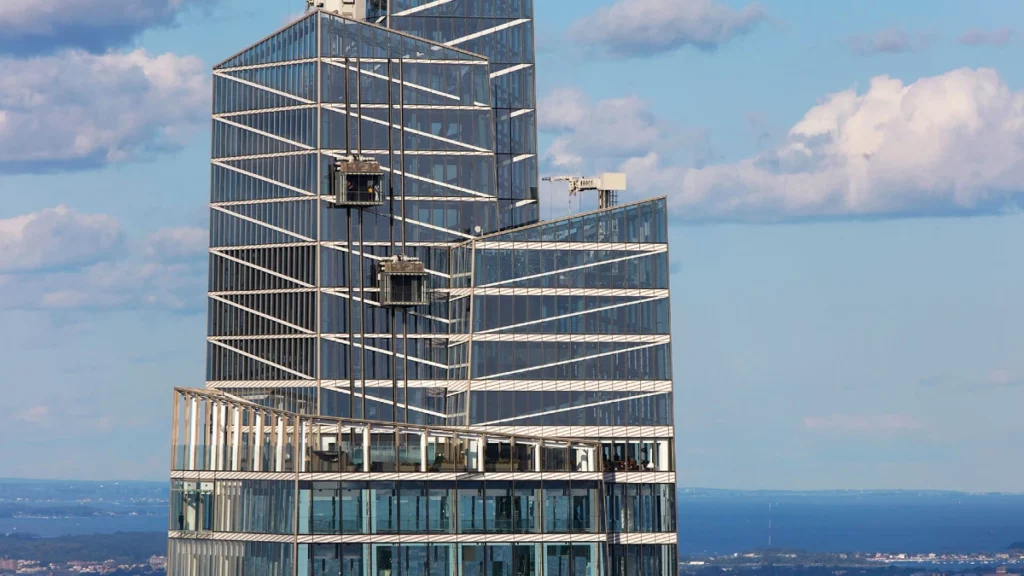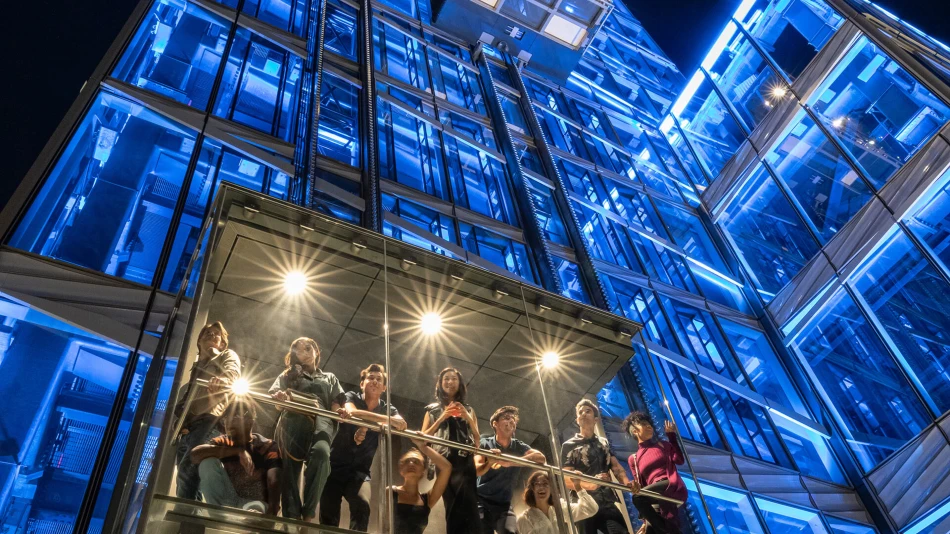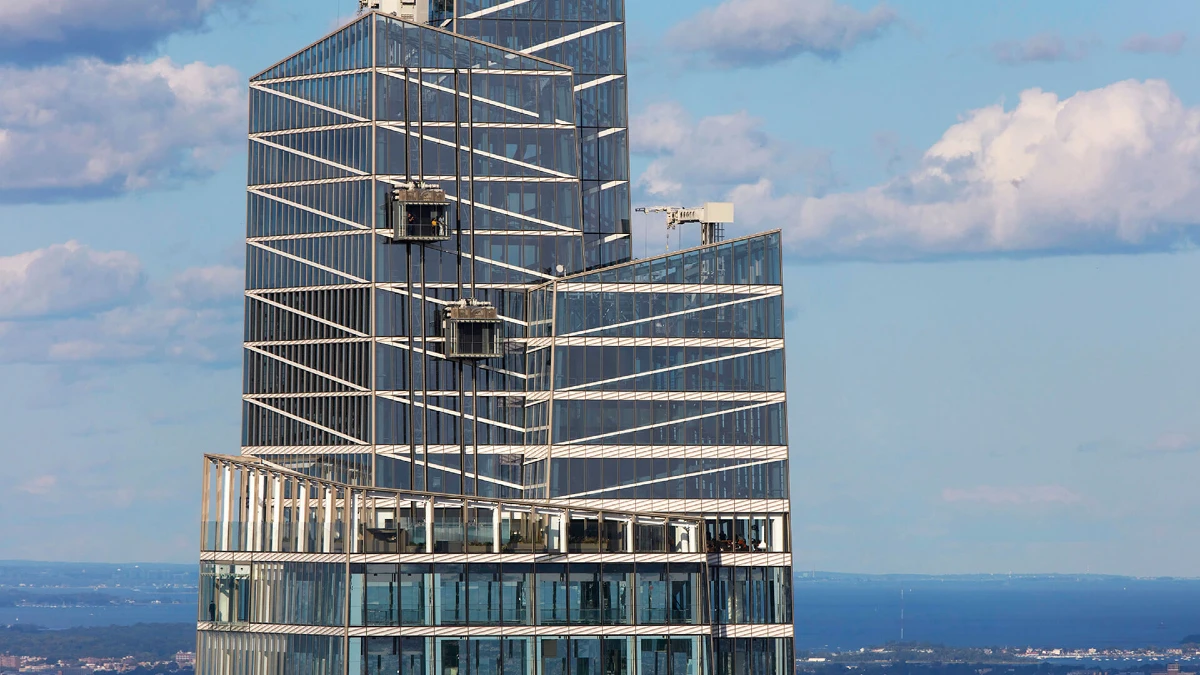
Summit One Vanderbilt has two elevator experiences – the elevator that takes you from the ground floor to the 91st-floor observation deck and the Ascent elevator, which takes you from the 93rd floor to the highest point of the building.
Since the Ascent elevators are fully transparent, they are also called glass elevators.
Elevator to the observation deck
The Summit experience starts at ground level in New York’s Grand Central Station, located beneath One Vanderbilt.
Before you take the elevator to the Summit observation deck, you watch a short video called ‘Celebration’ as part of the queue process.
After that, all guests must wear shoe coverings before stepping into the elevator, which is an immersive exhibit featuring flashing lights as it launches you to the top in just 42 seconds.
The first Summit One Vanderbilt elevator drops you off at the 91st floor, a 65,000 square foot, multilevel observation deck with mirrored floors and walls at about 1,000 feet (305 meters).
Ascent – the external elevator
Summit One Vanderbilt’s Ascent elevators run outside the building’s facade, rising to 1,210 feet (369 meters) above New York City.
There are two such Ascent elevators.
Both are fully transparent glass elevators that jut out of the building, providing fascinating views of Manhattan.
These rack-and-pinion elevators at One Vanderbilt are the world’s largest exterior glass-floor elevators.
The elevators start from the observation deck at 1084 feet (330 meters) and go up to 1210 feet (368 meters) on almost 131 feet (12.2 meters) of the trackway.

The glass of the Ascent elevator is up to 40 mm thick and is equipped with an invisible heating system that guarantees clear views throughout the year.
Summit’s Ascent elevators travel at the speed of 83 feet (25 meters) per minute.
The slow speed ensures that the tourists in the elevator are comfortable and can peacefully enjoy the New York skyline.
Architects of One Vanderbilt’s elevators
Cimolai Technology designed the cabins of the two elevators, including the drive mechanisms and the trackway connected and integrated with the building.
The trackway on which the elevators glide is made of stainless steel – the strongest available on the market.
It is built with tight tolerances to ensure high performance and safety levels.
Even though the elevators travel slowly, they are built to operate at up to 50 mph (80 kph) and to withstand high winds up to 100 mph (160 kph).
